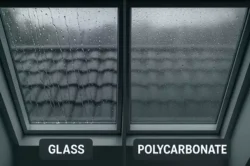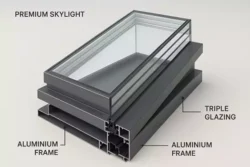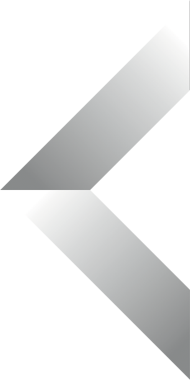

When choosing a skylight, most people focus on style, size, or placement—but one of the most critical decisions lies in the material used for the glazing and frame. The best material for your skylight impacts not only aesthetics but also insulation, durability, safety, and long-term performance—especially in a country like the UK, where weather conditions vary dramatically.
In this article, we’ll explore the most commonly used materials for skylights, compare their pros and cons, and help you determine which one suits your project best—whether it’s a flat-roof extension in London, a pitched roof in Yorkshire, or a loft conversion in Edinburgh.
The UK’s temperate maritime climate presents unique challenges: long, dark winters with heavy rainfall and periods of intense summer sun. Choosing the wrong skylight material can result in:
| Material | Clarity | Insulation | Durability | UV Resistance | Lifespan | Best For |
|---|---|---|---|---|---|---|
| Tempered Glass | ★★★★★ | ★★★★☆ | ★★★★☆ | ★★★★★ | 20+ yrs | Most homes, flat/pitched roofs |
| Laminated Glass | ★★★★☆ | ★★★★★ | ★★★★★ | ★★★★★ | 20+ yrs | Walk-on skylights, commercial |
| Polycarbonate | ★★☆☆☆ | ★★☆☆☆ | ★★★★☆ | ★★☆☆☆ | 7–10 yrs | Budget extensions, conservatories |
| Acrylic (PMMA) | ★★☆☆☆ | ★★☆☆☆ | ★★★☆☆ | ★★☆☆☆ | 5–8 yrs | Greenhouses, sheds |
The right material ensures thermal insulation, light transmission, weather resistance, and even noise reduction in windy or urban environments.
| Frame | Insulation | Durability | Aesthetics | Maintenance | Best For |
|---|---|---|---|---|---|
| Aluminium | ★★★★☆ | ★★★★★ | ★★★★★ | ★★★★☆ | Modern, flat roofs |
| uPVC | ★★★☆☆ | ★★★☆☆ | ★★☆☆☆ | ★★★★☆ | Budget residential |
| Timber | ★★★★★ | ★★★☆☆ | ★★★★☆ | ★★☆☆☆ | Heritage, traditional buildings |
Tempered (toughened) glass is the most popular option in modern skylights—especially those offered by companies like SM Glass Tech.
Advantages:
Best for: All residential and commercial skylights, especially flat rooflights and walk-on skylights where safety and clarity are crucial.
Limitations:
Expert tip: Choose laminated + tempered combinations for overhead applications—this meets BS 5516 safety glazing standards in the UK.
Often used in walk-on or anti-theft skylights, laminated glass consists of two panes bonded with a plastic interlayer (usually PVB).
Advantages:
Best for: Flat roof skylights, commercial applications, roof terraces, and schools.
Limitations:
Slightly higher cost than standard tempered glass
These lightweight alternatives are used in budget-friendly or DIY skylights, especially on conservatories or greenhouses.
Advantages:
Limitations:
Best for: Temporary outbuildings, sheds, greenhouses—not recommended for main residential rooflights in the UK.

| Material | Light Clarity | Insulation | Impact Resistance | UV Resistance | Lifespan | Best Used For |
|---|---|---|---|---|---|---|
| Tempered Glass | Excellent | High | Medium | Excellent | 20+ yrs | Most residential and commercial roofs |
| Laminated Glass | Very Good | High | High | Excellent | 20+ yrs | Walk-on skylights, flat roofs |
| Polycarbonate | Moderate | Low–Medium | Very High | Moderate | 7–10 yrs | Budget builds, conservatories, sheds |
| Acrylic (PMMA) | Moderate | Medium | Medium | Low–Medium | 5–8 yrs | Greenhouses, temporary installations |
The industry standard for premium rooflights—especially with slimline profiles like those offered by SM Glass Tech.
Pros:
Cons:
Best for: High-end residential and commercial projects; flat and modular rooflights
Common in budget skylight kits and smaller units.
Pros:
Cons:
Best for: Affordable extensions and retrofit upgrades
Traditional material used in heritage or listed buildings, often with internal finishes.
Pros:
Cons:
Best for: Listed properties, period homes, aesthetic interior finishes

When deciding on the best skylight material, evaluate the following:
SM Glass Tech specializes in premium glass rooflight systems tailored to UK weather. Their products typically feature:
These configurations ensure maximum light, thermal comfort, and safety—making them ideal for both domestic and commercial projects across Britain.
more: Best Custom Skylights
If you’re installing a skylight in the UK, the best combination of materials is:
✅ Tempered and laminated glass glazing
✅ Thermally broken aluminium frames
This setup offers:
While polycarbonate or PVC options may work for budget builds or temporary structures, they fall short in performance, lifespan, and aesthetic appeal.
Ready to install a skylight built to last? Contact SM Glass Tech for tailored advice, product recommendations, or a bespoke quote today.


Send us your contact details and a specialist will get in touch with you.